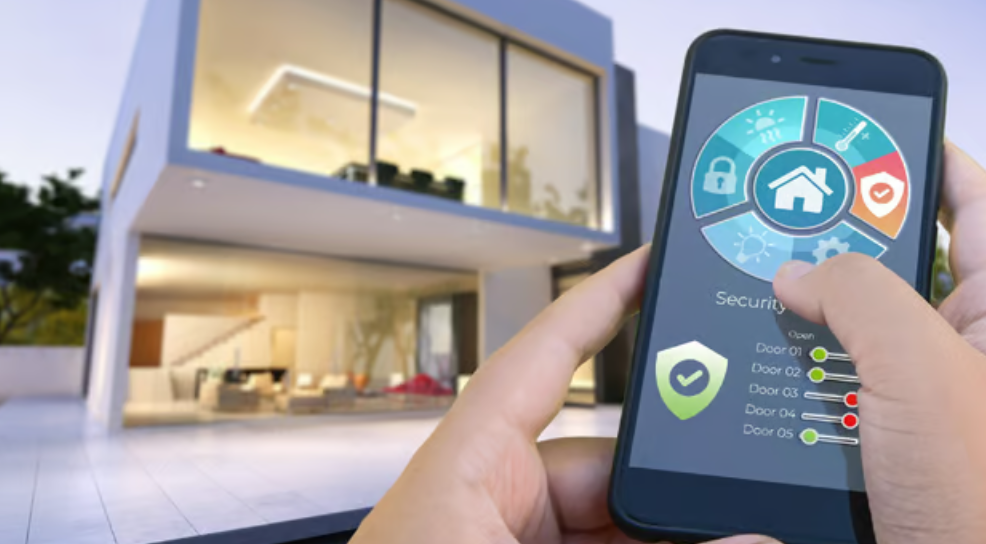Did you know that a home with a security system is 300% less likely to be burglarized? Discover how smart home security systems can revolutionize your safety.

In an age where technology is intertwined with our daily lives, smart home security systems are becoming increasingly popular. More homeowners are eager to protect their properties and loved ones using cutting-edge technology. But what exactly are smart home security systems?
These systems combine various devices that communicate to enhance home safety. They include elements such as smart cameras, alarms, motion sensors, locks, and even home automation features. Together, they create a robust security setup that not only alerts homeowners of potential threats but can also deter intruders altogether.
But how do you choose the right system? How do these products integrate with your day-to-day life? What’s the best way to ensure your security system evolves as your needs change? Throughout this article, we will explore the advantages of smart home security systems, their main features, the different types available, and how to select the best one for your needs.
Benefits of smart home security systems
Investing in a smart home security system comes with numerous benefits. One of the most significant advantages is convenience. With these systems, homeowners can monitor their properties from anywhere using a smartphone app. Video feeds from cameras, notifications about movement, and even the ability to lock or unlock doors remotely all provide peace of mind.
Moreover, security systems can deter crime. According to various studies, homes equipped with security systems are three times less likely to be targeted by burglars. The presence of visible cameras or alarm systems can dissuade intruders from attempting to break in.
Another benefit is the integration of technology that allows for real-time alerts. For instance, if a smoke alarm or security camera detects unusual activity, notifications can be sent directly to the homeowner’s phone. This immediacy can be critical in preventing theft or injury.
Additionally, many smart home security systems can integrate with other smart home devices, enhancing efficiency and overall security. For example, you can program your lights to turn on in conjunction with your camera’s motion detection, mimicking an occupied home even when you are away.
Types of smart home security systems
When it comes to smart home security, there’s a broad spectrum of options available. The most common types are professionally monitored systems and self-monitored systems. Professionally monitored systems typically require a subscription service, where trained personnel monitor your home 24/7 and respond to alerts. This option is preferred by those who find peace in knowing that professionals are watching over their property.
On the other hand, self-monitored systems allow homeowners to control and monitor their security from their devices. This system may offer lower upfront costs since it usually doesn’t involve a subscription. However, it places the onus of responding to alerts on the homeowner, which could be a concern for some.
Additionally, DIY security kits are becoming increasingly popular. These systems come with various sensors and cameras that are easy to install without any professional help. They often include app controls and cloud storage for video recordings. They provide flexibility and customizability based on your unique needs.
Lastly, specialized systems like smart doorbells and security cameras can be added to existing setups. They serve specific needs, such as monitoring who is at your door or giving you a view of your front yard.
Key features to consider
Choosing a smart home security system involves several key considerations. Start by evaluating your property size. Smaller homes may find basic systems adequate, while larger homes might require robust features and more cameras for complete coverage.
Next, look at the resolution of the cameras. High-definition video quality is crucial for tracking activity effectively. Higher resolution allows for clearer images during the day and better nighttime visibility. Many systems come with night vision, a helpful feature for outdoor cameras.
Consider the types of sensors the system offers. Motion detectors and window/door sensors are essential for detecting unauthorized entries. Some modern systems also offer environmental sensors for smoke or water detection, contributing to overall safety.
Integration with other smart home devices is another important feature. Ensure the security system can work with devices like smart lights or personal assistants. Compatibility ensures that your home can respond dynamically to security issues.
Cost considerations
Budget is a vital factor when selecting a smart home security system. Prices can vary significantly based on features, brand, and whether the system requires professional installation. Basic DIY systems may start at a few hundred dollars, while comprehensive systems with professional monitoring can reach over a thousand dollars annually.
Another cost factor is the subscription fees associated with professionally monitored systems, which typically range from $15 to $60 per month. While you can save money with self-monitoring options, you may need to factor in potential costs for cloud storage, app access, and additional equipment as needed.
Make sure to evaluate how long the warranty lasts and what services it covers. Some brands provide warranties for their devices for up to several years, which can influence long-term costs.
Best practices for installation and usage
Once you’ve decided on a smart home security system, proper installation is crucial for ensuring effectiveness. Begin by conducting a thorough walkthrough of your property. Identify vulnerable spots, such as entryways and windows, where you would want to place cameras and sensors. Consider coverage areas, so you have a complete view of your property.
For DIY systems, read through the instruction manual to set up devices properly. If using wireless connections, ensure strong Wi-Fi service in the area where cameras and sensors are located. Conduct tests after installation to confirm that every device works correctly and that notifications are received as expected.
After setup, regularly update your system. Software and firmware updates improve performance and security. Creating strong, unique passwords and secure access points will further protect your system.
Smart home security systems revolutionize home safety with convenience, efficiency, and advanced technology. With numerous options available, homeowners can tailor a system to fit their specific needs and budget. Understanding the benefits, types, key features, and the costs involved helps create a foundation for making an informed decision. With careful planning and effective installation, these systems can enhance peace of mind while ensuring safety for everyone in the household.


